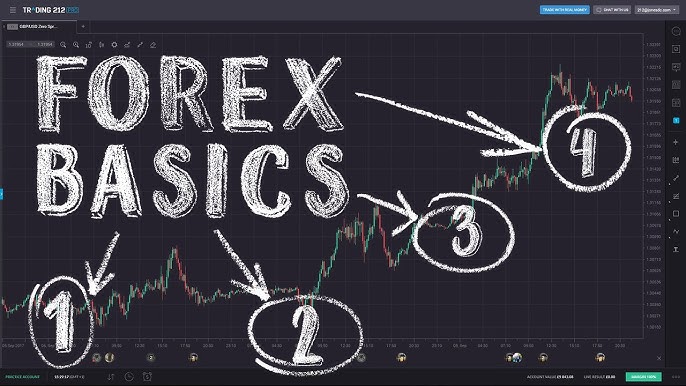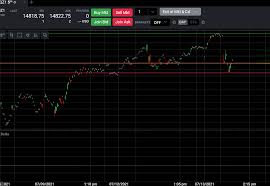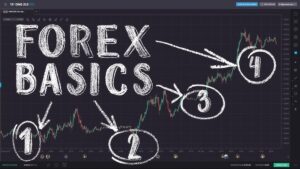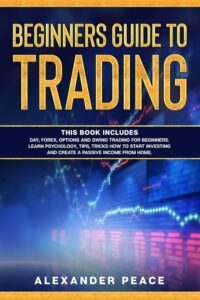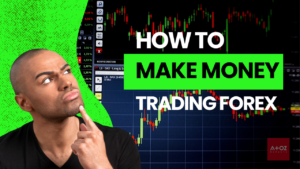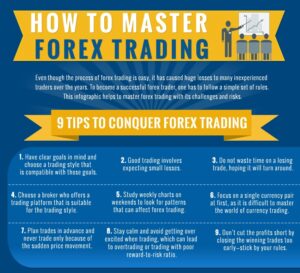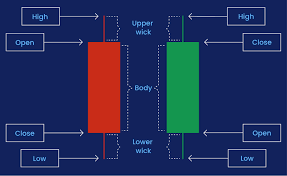The Foreign Exchange Market for Beginners is a platform where currencies are bought and sold, empowering worldwide exchange and speculation. It’s a 24/5 showcase, open Monday to Friday, and works electronically, interfacing with dealers worldwide.
Introduction The Foreign Exchange Market for Beginners
Definition of the Foreign Exchange Market: Define what the Forex market is, emphasizing its part as the biggest and most fluid budgetary advertising where monetary forms are exchanged globally.
Importance of Understanding Forex: Highlight why it’s basic for people included in the universal exchange, speculation, or fund to have a strong understanding of how the Forex showcase works and its noteworthiness in the worldwide economy.
Basics of the Foreign Exchange Market
Overview of Forex Trading: Give a brief overview of what Forex trading involves, including the buying, offering, and trading of currencies.
Differences Between Forex and Stock Markets: Highlight the qualifications between the Forex showcase and conventional stock markets in terms of structure, exchanging hours, and participants.
Structure of the Forex Advertise: Clarify the distinctive portions of the Forex showcase, counting the spot showcase (for prompt exchanges), forward showcase (for future exchanges), and prospects showcase (for standardized contracts exchanged on exchanges).
Key Players in the Forex Market
Commercial Banks: Depict the part of commercial banks as middlemen in the Forex showcase, encouraging cash exchanges for clients and giving liquidity.
Central Banks: Clarify how central banks impact trade rates through money-related approach choices, intriguing rate alterations, and interventions.
Hedge Reserves and Speculation Firms: Talk about the association of support reserves and venture firms in cash exchanging, centered on their procedures and effect on showcase dynamics.
Corporations: Diagram why multinational organizations take an interest in Forex to advertise, counting overseeing money chance related with universal commerce operations.
Retail Dealers: Say the part-person retail dealers in the Forex market advertising, emphasizing the availability of online exchanging platforms.
Factors Impacting Exchange Rates
Interest Rates: Talk about how changes in interest rates influence trade rates and pull in or repulse outside investment.
Economic Pointers: Clarify the centrality of key financial markers, such as GDP development, expansion rates, and business information, in forming money values.
Political Steadiness: Highlight the effect of political steadiness and geopolitical occasions on financial specialist certainty and money fluctuations.
Market Assumption: Depict how advertising opinion, affected by news, occasions, and financial specialist brain research, can drive short-term developments in trade rates.
Geopolitical Occasions: Talk about how geopolitical occasions, such as clashes or exchange pressures, can disturb money markets and create volatility.
Understanding Currency Pairs
Base Money and Cite Money: Characterize what base and cite monetary forms are in a cash combine and clarify their parts in deciding trade rates.
Major, Minor, and Extraordinary Cash Sets: Separate between major money sets (e.g., EUR/USD, GBP/USD), minor money sets (e.g., EUR/GBP, AUD/CAD), and intriguing cash sets (e.g., USD/TRY, EUR/JPY).
Currency Match Documentation: Clarify how money sets are spoken to in the Forex showcase, centered on the standard documentation and how to translate it.
How Forex Trading Works
Buying and Offering Monetary Forms: Detail the preparation of buying and offering monetary standards in the Forex advertisement, counting how dealers benefit from money cost movements.
Bid and Inquire Costs: Characterize offered and inquired costs and clarify their centrality in deciding the toll of exchanging currencies.
Spread: Portray what the spread is and how it speaks to the contrast between offered and inquiry costs, highlighting its effect on exchanging costs.
Leverage and Edge: Characterize use and edge and talk about how they intensify both potential benefits and misfortunes in Forex trading.
Types of Orders: Clarify the distinctive sorts of orders utilized in Forex exchanging, counting advertise orders, constrain orders, and stop-loss orders, and how they are executed.
Analyzing the Forex Market
Technical Investigation: Talk about the utilization of charts, pointers, and designs to analyze authentic cost information and figure out future cost movements.
Charts: Clarify the different sorts of charts utilized in specialized investigations, such as line charts, bar charts, and candlestick charts.
Indicators: Present common specialized pointers like moving midpoints, MACD, and RSI, and how dealers utilize them to distinguish patterns and signals.
Patterns: Depict chart designs like heads and shoulders, triangles, and banners and how dealers translate them to make exchanging decisions.
Fundamental Investigation: Diagram the utilization of financial information, central bank approaches, and geopolitical occasions to survey the inherent esteem of monetary forms and make exchanging decisions.
Economic Information: Talk about key financial pointers and their effect on cash values, such as interest rates, GDP development, and inflation.
Central Bank Arrangements: Clarify how central bank choices on interest rates, money-related approaches, and quantitative facilitating can impact trade rates.
Geopolitical Occasions: Highlight the noteworthiness of geopolitical occasions, such as races, wars, and exchange transactions, in forming showcase opinion and money movements.
Strategies for Successful Forex Trading
Technical Exchanging Methodologies: Display different specialized exchanging procedures that depend on cost charts and pointers to distinguish exchanging opportunities.
Trend Taking After: Clarify how dealers can benefit by taking after patterns in cash costs and utilizing pointers like moving midpoints to affirm trends.
Breakout Exchanging: Portray the methodology of exchanging breakouts from key back or resistance levels and how dealers oversee chance utilizing stop-loss orders.
Range Exchanging: Examine how dealers can benefit from exchanging inside a range-bound advertisement by buying close-back levels and offering close resistance levels.Fundamental Exchanging Methodologies: Present essential exchanging procedures that center on financial information, central bank arrangements, and geopolitical occasions to make exchanging decisions.
Carry Exchange: Clarify the concept of the carry exchange, where dealers borrow reserves in low-interest-rate cash to contribute to a higher-yielding currency.
News Exchanging: Examine how dealers can capitalize on market-moving news occasions by expecting their effect on cash costs and executing exchanges accordingly.
Sentiment Investigation: Highlight the part of advertising assumptions in driving money developments and how dealers can gauge opinion through different indicators.
Risk Administration Strategies: Emphasize the significance of chance administration in Forex exchanging and present methods to ensure capital and minimize losses.
Stop-Loss Orders: Clarify how stop-loss orders offer assistance to dealers, constraining misfortunes by naturally closing positions at foreordained cost levels.
Position Measuring: Examine the concept of position measuring and how dealers can decide the suitable measure of each exchange based on their hazard resilience and account size.
Diversification: Push the benefits of expanding exchanging methodologies, cash sets, and timeframes to spread hazards and progress in general exchanging performance.
Risks and Challenges in Forex Trading
Volatility: Examine how the high instability of the Forex showcase can lead to fast cost developments and expanded chances for traders.
Leverage: Highlight the threats of utilizing tall use in forex exchanging and how it can open up both picks and losses.
Market Control: Address the chance of showcase control in the Forex showcase and how dealers can secure themselves from false activities.
Psychological Challenges: Investigate the mental challenges confronted by Forex dealers, such as fear, eagerness, and passionate exchange, and how to overcome them.
Conclusion: Forex Trading for Beginners
Recap of Forex Showcase Basics: Summarize the key concepts secured in the direct, strengthening the significance of understanding the Forex advertise for effective trading.
Importance of Persistent Learning and Hone: Empower dealers to proceed with learning and practicing their abilities to make strides in their exchanging execution over time.
Encouragement for Yearning Forex Dealers: Offer words of support for trying Forex dealers, emphasizing that victory in Forex exchanging is achievable with devotion, teaching, and a key approach.
